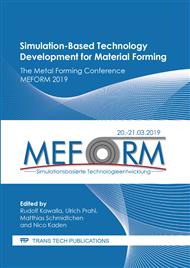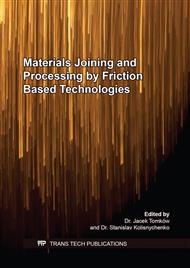p.57
p.66
p.76
p.85
p.93
p.101
p.112
p.119
p.125
Development of a Friction Welded Joint for Future Industrial Application
Abstract:
Ship transport continues to be the most economical intercontinental means of transportation, which is becoming more and more under observation due to increasing international environmental protection regulations. In order to protect the marine biotope, the government is introducing stricter exhaust emission regulations, which mean the further development of low-emission large engines and thus make the development of new combustion chamber components indispensable. This paper presents FE simulations of a friction welding process for two metallic materials, which are being developed as part of a BMWi joint project for the production of innovative combustion chamber components. In addition, the first results of the simulations and their comparison with real tests are presented.
Info:
Periodical:
Pages:
119-124
Citation:
Online since:
March 2019
Keywords:
Permissions:
Share:
Citation:



